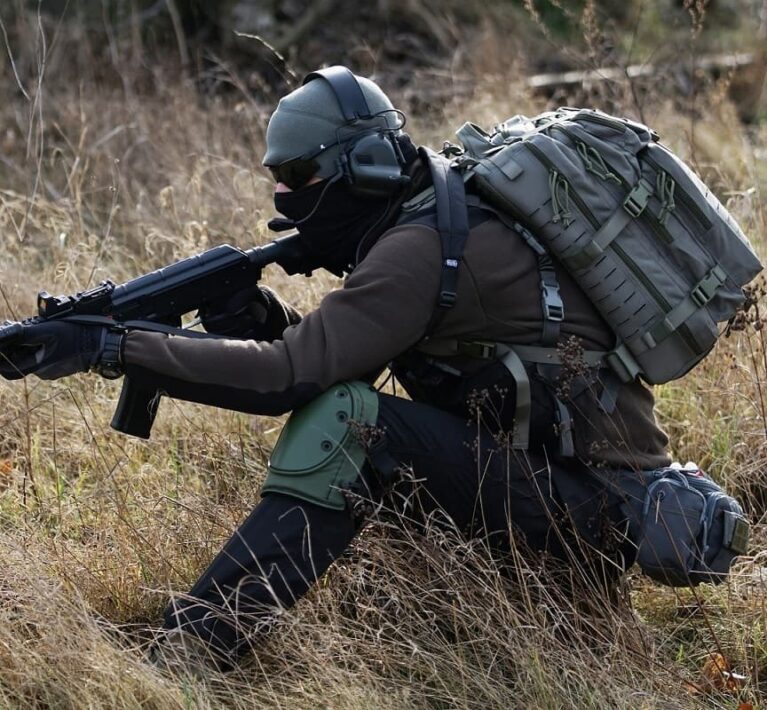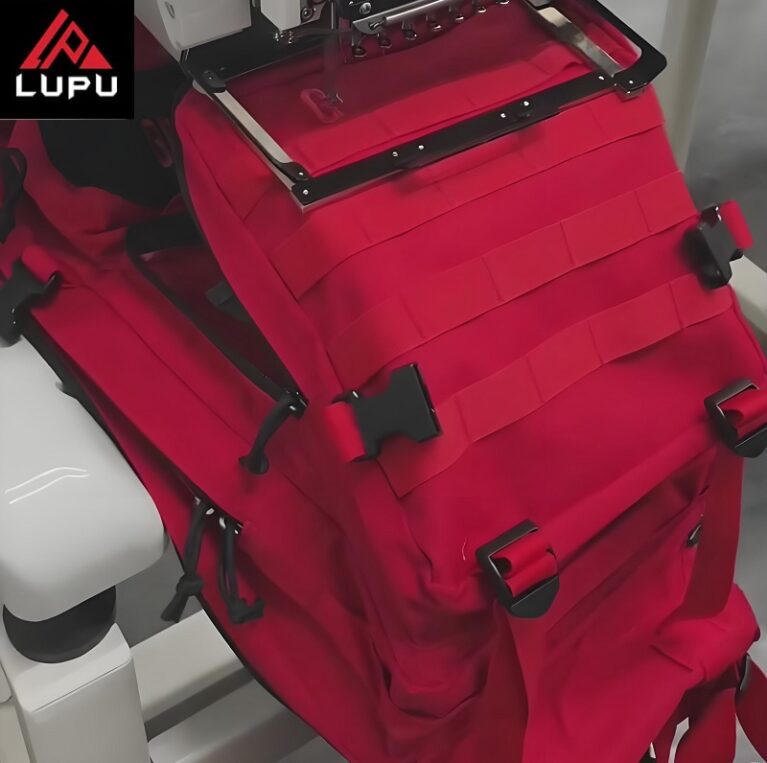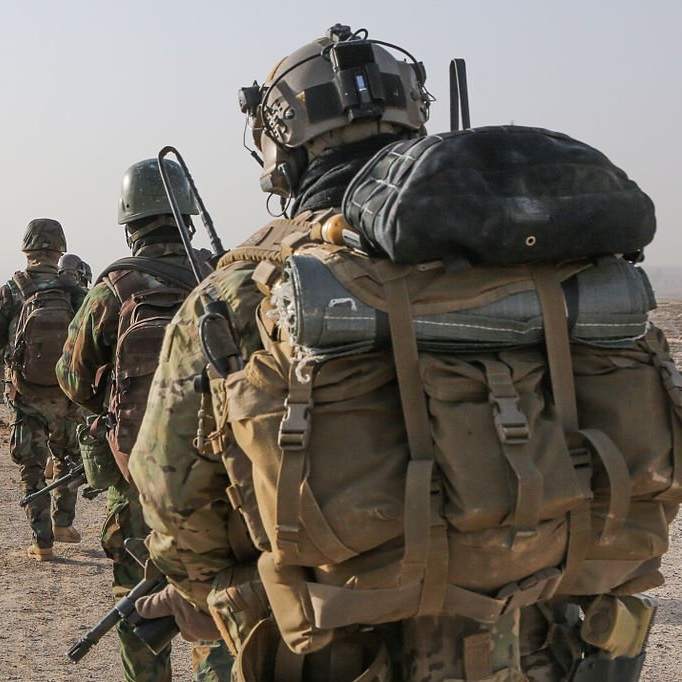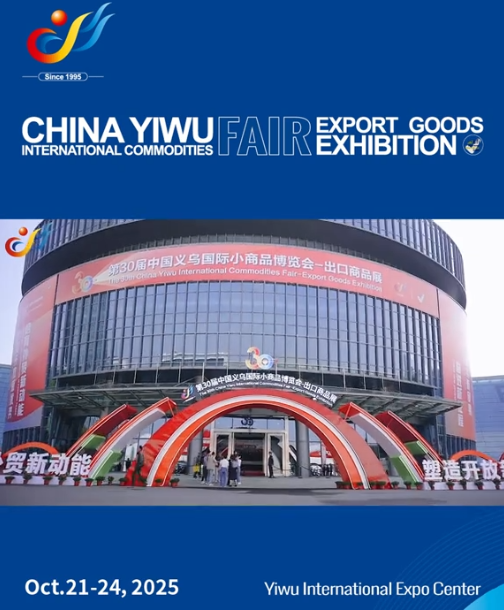Introduction
Capacity matters, but hwo to the tactical backpack capacity expansion? Whether you're a daily commuter toting a laptop and gym kit, a photographer packing lenses into a compact carry system, or an operator carrying mission-critical equipment across difficult terrain, being able to expand or adapt your load space on demand transforms how useful a backpack becomes. This article compares the primary capacity-expansion approaches for tactical backpacks, evaluates how different materials respond to those approaches, offers scenario-based recommendations (from urban commuting to field operations), and presents a cost–benefit matrix plus a four-step decision framework to choose the best expansion solution.
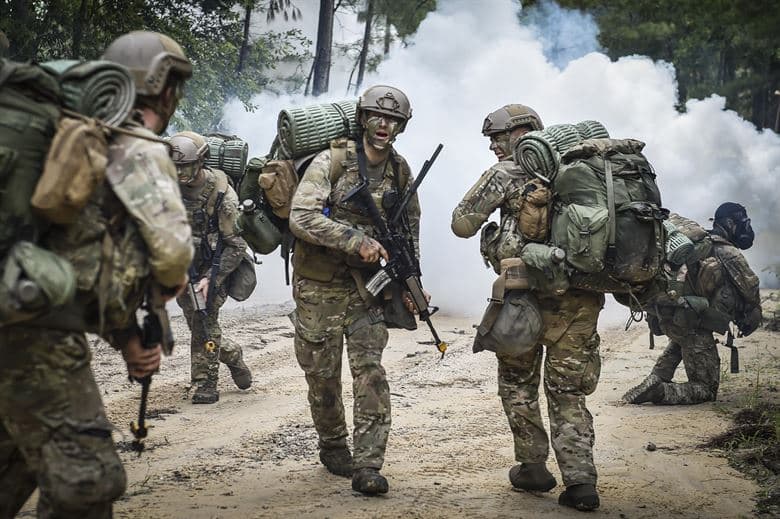
Throughout the article I'll reference typical behaviors of tactical companies, what tactical gear manufacturers and tactical gear suppliers commonly produce, and considerations a tactical backpack manufacturer or tactical bag manufacturer will design for. The aim is practical — help product designers, buyers, procurement officers, and serious end-users understand trade-offs and choose the best-fit solution.
1. Tactical Backpack Capacity Expansion: Two Core Approaches
Tactical backpack capacity expansion solutions fall into two large families:
1. External Expansion— attaching additional pouches, modules, or rigid external cargo to the outside of the pack. Examples: MOLLE pouches, compression straps + external bungee grids, daisy chains, zip-on/zip-off accessory panels, roll-top extensions, and cargo nets.
2. Internal Partition Adjustment Expansion— rearranging or enlarging internal volume through adjustable dividers, removable framesheets, expandable gussets, roll-top or zip-gusset main compartments, and dedicated modular internal organizers.
Both approaches are frequently combined by tactical gear manufacturers and tactical backpack manufacturers to produce hybrid systems. Below we compare them in detail.
1.1 External Expansion — What it Is |
1.2 Internal Expansion — What it Is |
|
External expansion leverages add-on modules to increase capacity or organization without changing the core internal volume: MOLLE/PALS pouches and accessories that clip or weave into webbing. |
Internal expansion optimizes or enlarges the main compartment through structural design: Removable/adjustable dividers (hook-and-loop or sliding systems).
|
Pros |
Pros |
| Modularity & flexibility: Add what you need and leave it off when you don't. Fast reconfiguration: Attach/detach on the fly. Specialized tools/outside access: Items you need quickly can be stored externally (e.g., first aid, radio). Less internal clutter: Keeps internal volume for protected items. Scalable load: Stack pouches for bigger missions. |
Protected storage: Items are sheltered from the elements. Lower snag profile: Bulk remains inside; silhouette cleaner. Better balance: Center of gravity stays stable when designed correctly. Security: Harder for opportunistic theft. Weather sealing: Easier to integrate waterproofing. |
Cons |
Cons |
| Increased snag risk: External items are exposed to catching or damage. Profile & balance issues: External loads can change center of gravity and increase wind resistance. Reduced stealth: Visibility and silhouette increase — undesirable for tactical ops. Potential security risks: Items are more accessible to theft or accidental loss. Weather exposure: External items may be less protected from rain, dust, and mud unless waterproofed. |
Complexity: More moving parts, more potential points of failure. Heavier construction: Structural reinforcements to accommodate expansion often add mass. Slower reconfiguration: Changing internal layout can take longer than clipping/unclipping external gear. Fixed maximum dimensions: Some internal expansion techniques have practical limits. More expensive to manufacture: Increases cost for consumers. |
2. Common Expansion Mechanisms — Technical Comparison
Below is a practical rundown of specific mechanisms, how they work, and typical pros/cons for designers and users.
| Expansion Mechanism | How it works | Best uses | Pros | Cons |
| MOLLE/PALS Attachment System (External) | Webbing grid sewn onto exterior; compatible pouches attach via straps or clips. | Military, law enforcement, field ops, modular loadouts. | Highly standardized; enormous accessory ecosystem from tactical companies/tactical gear suppliers; robust mechanical connection. |
Adds weight and bulk when pouches are attached; limited aerodynamic/stealth value.
|
| Zip-on / Zip-off Panels (External / Hybrid) | Full-width or half-width panels zip into a perimeter zipper to add a secondary compartment. | Multi-day missions, travel, photography. | Fast and weather-sealable (if designed well); keeps cargo somewhat protected. | Adds permanent seam lines; manufacture complexity; not all makers use weatherproof zippers. |
| Compression Straps & Bungee Grids (External) | Straps and elasticated grids secure bulky external loads. | Rolled jackets, pads, tripods, bulky soft items. | Inexpensive, lightweight, flexible. | Limited protection; can degrade under UV and abrasion. |
| Roll-top & Zip-Gusset Main Compartments (Internal) |
Variable-height closure (roll-top) or zip-open gusset expands internal volume. |
Weather-exposed tasks, adventure travel, waterproof builders. | Excellent weather resistance; continuous main compartment; variable volume. | Roll-top may be slower to access; requires skilled pack-packing to balance. |
| Removable Internal Dividers and Organizers (Internal) | Hook-and-loop or rail-mounted dividers allow compartment reconfiguration. | Camera/tech carries, medkits, kit separation. | Protects delicate kit, organizes effectively. | Adds interior complexity and weight. |
| Expandable Bottoms / Bellows (Hybrid/Internal) | Zippers or fold-out panels allow the bottom or sides to “grow.” | Seasonal clothing storage, expedition gear. | Keeps profile clean when compact; increases capacity when needed. | Adds seam stress points; water ingress risk if not sealed. |
| Detachable Daypacks / Frame Packs (External Hybrid) | A small daypack or frame can be secured to the front or back of a travel or assault pack. | Base-camp + patrol transitions, photography. | Versatile; splits bulk across two loads. | More hardware; compatibility issues across brands |
3. Material Compatibility: How Different Materials Respond to Expansion
Material choice is central to how well expansion solutions perform. Below we analyze common materials and their suitability for the expansion methods above. For each material, we note adaptability to external/internal expansion, advantages, limitations, and suggested expansion approaches.
| Material | Adaptability | Advantages | Limitations | Best-fit expansion approaches |
| Nylon (Common: 210D, 420D, 500D, 1000D — includes Cordura variants) | Excellent overall. Nylon handles stitched webbing, MOLLE systems, and reinforced seams well. Higher denier (500D–1000D) supports heavy external loads; ripstop variants (210D/420D) balance weight and tear resistance. | 1. High tensile strength and abrasion resistance (especially Cordura). 2. Good sewability for MOLLE/PALS and reinforced panels. 3. Compatible with PU/TPU coatings for water resistance. 4. Widely used by tactical backpack manufacturers and tactical bag manufacturers — massive accessory ecosystem. |
1. UV exposure eventually degrades nylon; coatings may delaminate. 2. Lower-density nylons may be punctured or torn by sharp external loads if not reinforced. |
External: MOLLE/PALS, zip-on panels, compression straps — works extremely well when stitched to reinforced panels and backed by internal reinforcements or webbing. Internal: Dividers, roll-top, gussets — robust when backed with internal reinforcement frames or stiffeners. Design tip: For heavy external attachments, reinforce the fabric with internal webbing layers or bartack stitching to distribute forces. |
| Canvas (Including Waxed Canvas) | Moderate. Canvas is tough and holds structure but is heavier. Stitching for MOLLE is possible but not always used because canvas bags often aim for a clean vintage look. | 1. Durable and abrasion-resistant; excellent tear propagation characteristics. 2. Aesthetically pleasing for urban tactical-style bags. 3. Waxed canvas offers reasonable water repellency. |
1. Heavier than synthetics; when wet, weight increases. 2. Sewing MOLLE webbing onto canvas is fine; however, repeated flexing at attachment points could cause fabric wear unless reinforced. 3. Not ideal for complex internal strap/frame systems that require tight tolerances. |
External: Straps, lash points, and large strap-on rolls are ideal. MOLLE can be used but looks and feel may suffer aesthetically. Internal: Large gusset expansion and removable dividers perform well. Roll-top less common for canvas designs. Design tip: Use leather or synthetic reinforcements at attachment points. Waxed canvas pairs well with zip-on panels that use leather/synthetic reinforcement. |
| Leather | Limited. Leather offers style and local reinforcement but is not well-suited for weighty, modular external expansions intended for tactical operations. | 1. Premium aesthetics and abrasion resistance for small areas. 2. Natural rigidity can support load in specific, reinforced panels. |
1. Heavy, non-breathable, poor water handling (unless specially treated). 2. Poor sew-through performance for high-load webbing; stitching can tear out under repeated stress. 3. Not commonly used by tactical companies for main chassis. |
External: Leather is best for trim, lash tabs, and cosmetic panels; not for core MOLLE systems. Internal: Leather framesheets or reinforced panels can add structure but increase weight. Design tip: Use leather sparingly — replace heavy-use attachment points with synthetic reinforcements while using leather for appearance. |
| Eco / Sustainable Materials (Recycled PET, Bio-based Nylon, Dyneema from recycled sources) | Varies by fabric construction. Modern recycled polyesters and eco-nylons can be engineered to high performance. | 1. Lower environmental footprint — increasingly used by forward-thinking tactical companies and tactical gear manufacturers. 2. Can be coated and produced in ripstop constructions. 3. Marketable for consumers concerned about sustainability. |
1. Early generations sometimes had lower abrasion resistance compared with high-grade Cordura; however, new formulations narrow that gap. 2. Supplier variability: different tactical gear suppliers have different quality standards. |
External: Works well for low-to-mid-load MOLLE systems and pouches; ensure reinforcement for heavy attachments. Internal: Compatible with gussets, dividers, and roll-top systems. Design tip: When using eco-materials for expansion areas, add internal webbing or laminate reinforcements to improve longevity. |
| Dyneema / UHMWPE (Ultra-High Molecular Weight Polyethylene) | Excellent for ultra-light, extremely strong builds. Dyneema is typically laminated, which makes it less flexible for stitched MOLLE without tape or specialized sewing technique | 1. Extremely high strength-to-weight ratio. 2. Excellent abrasion resistance relative to weight. 3. Water-resistant and dimensionally stable. |
1. Costly. 2. When laminated, sewing through multiple layers and webbing requires specific adhesives or bonded seams; traditional stitched MOLLE can delaminate if not constructed properly. 3. UV degradation risk if not treated or covered. |
External: Best for integrated lightweight systems and bonded external pockets — not classic stitched MOLLE unless designed for it. Internal: Gussets and roll-top systems excel because they rely on laminate strength rather than sewn webbing. Design tip: Tactical gear manufacturers using Dyneema can offer removable lash straps that clip to bonded anchors to avoid repeated hole-stressing. |
| Kevlar / Ballistic Fabrics | Specialized. Kevlar excels when puncture or cut resistance is required. It's commonly used for ballistic protection rather than large-volume expansion system | 1. Cut resistance and high tensile strength. 2. Useful for abrasion/cut-prone external areas or inserts. |
1. Stiff and expensive; doesn't stretch. 2. Heavy relative to its area; sew-through and edge fray can be issues. |
External: Use as abrasion/cut-resistant panels where external loads are expected to rub or be exposed (e.g., under MOLLE). Internal: Protect inner compartments with ballistic liners or slip-in panels. Design tip: Use Kevlar as protection rather than primary chassis for expansion. |
| Laminates and Composite Fabrics (X-Pac, SuperFabric) | Very good — engineered to balance weight, waterproofing, and abrasion resistance. | 1. Tailorable performance: waterproof, tear-resistant, dimensionally stable. 2. Often used by high-end tactical gear manufacturers. |
1. Costlier to sew and more sensitive to heat in manufacturing. 2. Limited breathability (not a major issue for external expansion elements). |
External: Bonded attachment points or zip-on systems perform well. Internal: Roll-top and gusseted systems with laminated walls excel. Design tip: For high-end products, laminate exterior with internal reinforcement frames for reliable external attachments. |
4. Scenario-Based Recommendations (from Urban Commute to Field Operations)
Different use cases demand different expansion approaches and materials. Below are scenario-based recommendations emphasizing the right mix of expansion type and material.
| Scenario | Key needs | Best Materials | Why? | Recommended Expansion Strategy |
| Urban Commuter / Everyday Carry (EDC) | Low profile, theft-resistance, weather protection for electronics, moderate tactical backpack capacity expansion for lunch/gym. | Durable mid-weight nylon (420D ripstop) or laminate fabrics (X-Pac). Avoid heavy canvas unless aesthetic is priority. | Internal expansion maintains clean silhouette and security. Nylon provides balance of weight, durability, and water resistance. | Primary: Internal expansion — adjustable dividers, laptop sleeve, zip-gusset or roll-top for variable volume. Secondary: Minimal external expansion — a low-profile zip-on pocket for a water bottle, and internal lightweight MOLLE for small pouches. |
| Photographer / Tech Operator | Padded protection, modular internal organization, quick access. | 500D–1000D Cordura with PU/TPU liner. Consider laminated pockets where weatherproofing is crucial. | Internal organization protects expensive gear. Strong nylon handles weight of lenses and bodies; modular cubes let you expand or compress as needed. | Primary: Internal modular dividers (removable cubes), gusseted compartments, internal zip pockets for cables. Secondary: Small external pouch for tripod mounts or quick-access battery packs. |
| Outdoor Day Hiker / Weekend Traveler | Variable volume, weather protection, comfort at load, occasional external carriage for sleeping pad. | Ripstop nylon (420D–500D) or Dyneema-laminated fabrics for ultralight builds. For rough terrain, 500D Cordura preferred. | Roll-top gives weather-proof variable capacity. Dyneema offers light weight for long-distance hikers; Cordura resists abrasion from vegetation | Primary: Roll-top main compartment for weatherproofing and variable volume; internal hydration sleeve. Secondary: Compression straps and bungee grid for external stow of jacket, trekking poles. |
| Urban Tactical / Patrol Use (Police, Security) | Quick access, modular attachments for tools/medkits, durability, moderate stealth. | 500D–1000D Cordura or ballistic nylon; laminated fabrics for waterproofing on critical items. | MOLLE ecosystem enables quick role-based configuration. Nylon withstands repeated attach/detach cycles. | Primary: External MOLLE for pouches (medical, mag, radio) with secure closures. Secondary: Internal dividers for documents and electronics. |
| Military / Special Operations / Field Ops | Maximum modularity, survivability, weatherproofing, load distribution, fail-safe design. | High-denier Cordura, ballistic weave, laminated Dyneema in targeted panels, Kevlar reinforcements where cut resistance required. | Multipurpose missions demand both the quick access of external expansion and internal protection. Reinforced materials ensure longevity under heavy loads. | Primary: Hybrid — reinforced external MOLLE for mission-specific pouches; zip-on panels for mission kits; internal organizers and reinforced frame. Secondary: Detachable daypacks for patrols; roll-top main for waterproofing. |
5. Cost–Benefit Matrix: Economic to High-End Solutions
Below is a simplified matrix to guide trade-offs across cost, weight, durability, modularity, and weather protection for common expansion strategies and material combinations.
Legend: Low / Med / High
| Solution | Cost | Weight | Durability | Modularity | Weather Protection | Best For |
| 420D Ripstop Nylon + MOLLE + Compression Straps | Low–Med | Low | Med | High | Med | EDC, Budget outdoor |
| 500–1000D Cordura + MOLLE + Internal Dividers | Med | Med | High | High | Med–High | Patrol, photographer |
| Dyneema-laminate + Roll-top + Bonded Attach Points | High | Very Low | High | Med | High | Ultralight hikers, expedition |
| Waxed Canvas + Gusseted expansion + leather trims | Med | High | High | Low | Med | Urban style, commuter |
| X-Pac / Laminates + Zip-gusset + bonded panels | High | Med | High | Med | High | High-end travel, pro operators |
| Kevlar/Reinforced Panels + MOLLE + Frame | Very High | High | Very High | High | High | Ballistic protection, heavy-duty ops |
Interpretation tips:
If cost is primary and you need modularity, stick to mid-grade nylon with MOLLE. Many tactical gear suppliers target this segment.
If weight is primary, spend on Dyneema-laminated builds and favor internal roll-top expansion.
If durability and abrasion resistance are crucial (rugged field ops), choose high-denier Cordura and reinforce external attachment points.
For an aesthetic urban bag, waxed canvas offers visual appeal but sacrifices weight and some modular features.
6. Decision Framework — Four Steps to Pick the Optimal Expansion Solution
This four-step decision framework is designed to be practical and executable. Tactical companies and tactical backpack manufacturers often use similar frameworks during product design; users and procurement teams can use it when choosing or customizing gear.
Step 1 — Define the Mission Profile (Who & Where)
Questions: What will you carry? How often? Where (urban, rural, jungle, arctic)? Speed or stealth requirement? |
Step 2 — Prioritize the Constraints (What Matters Most)
Questions: Which constraints are non-negotiable? (e.g., waterproofing, minimal weight, budget, anti-cut). |
Step 3 — Map Expansion Methods to Material Choices (How to Achieve Goals)
Action: Use the mission profile and constraint ranking to pick expansion approaches and compatible materials: |
Step 4 — Validate with a Cost-Benefit Check and Field Test (Reality Check)
Action: Build a mini-spec and run a field test focusing on the highest-ranked constraints. Validate: |
7. Implementation Guidelines for Designers & Manufacturers
If you are a tactical gear manufacturer, tactical backpack manufacturer, or tactical bag manufacturer, here are design and production recommendations when implementing tactical backpack capacity expansion features:
7.1 Reinforce Attachment Points
Use internal webbing ladders and bartack stitches under MOLLE/PALS to distribute load across multiple seams.
On laminate fabrics, use bonded or welded anchors instead of pure stitched anchors when possible.
7.2 Manage Center of Gravity
Place heavy items close to the chassis and spine. Use compression straps to tighten external loads against the body.
For zip-on panels, ensure their mass is centered and the pack's hipbelt remains effective.
7.3 Weather Proofing
Pair roll-top or gusset expansion with sealed seams and waterproof zippers for reliable rain protection.
For zip-on panels, offer optional seam-sealing kits or taped seams.
7.4 User Experience (accessibility & speed)
For patrol-style packs, provide quick-release buckles on external pouches.
Use dual-access points: top lid plus rear access to the main compartment for fast retrieval.
7.5 Modular Ecosystem
Tactical companies and suppliers succeed when creating an ecosystem. Provide standard attachment dimensions and publish specs for third-party tactical gear suppliers to design compatible accessories.
7.6 Maintenance & Repairability
Use replaceable straps and pouches where wear is likely.
Provide spare parts and repair kits (e.g., extra webbing, stitching reinforcement patches).
8. Practical Examples & Use-Case Walkthroughs
Below are concise, realistic configurations you can emulate.
Example A — Urban Commuter Expandable Pack
Base: 420D ripstop nylon, padded laptop sleeve.
Expansion: Internal zip-gusset expands by 25% for gym clothes; hidden rear admin pocket.
External: Low-profile bottle pocket and slim attachable organizer.
Why: Keeps low silhouette, adds capacity when needed.
Example B — Patrol/Medic Ready Pack
Base: 500D Cordura chassis, reinforced MOLLE across front and sides.
Expansion: Zip-on medic panel with internal dividers and quick-access zippers.
External: Compression straps for trauma roll and external quick-access med pouch.
Why: Rapid reconfiguration between patrol and case response.
Example C — Expedition Ultralight Pack
Base: Dyneema laminate body with bonded anchor points.
Expansion: Roll-top main and a detachable ultralight daypack that clips without sewing.
External: Minimal bungee strap for a sleeping pad.
Why: Optimizes weight and weatherproofing for long-distance travel.
9. Trade-Off Summary & Rules of Thumb
If you need modularity → choose external MOLLE (but plan reinforcements).
If you need protection/weatherproofing → prioritize internal expansion and laminated materials.
If you need low weight → use Dyneema/laminates and favor bonded attachments over heavy sewn webbing.
If you have budget constraints → mid-denier nylon + smart compartmentation gives the best cost–performance.
If stealth and minimal profile are required → internal dividers & roll-top solutions are preferred.
Always design attachment anchors to back through to internal webbing or frame sheets to prevent seam failure.
10. Procurement Checklist for Buyers (Quick Reference)
When buying or specifying an expandable tactical bag, check for:
Attachment System Standardization: MOLLE/PALS spacing (25 mm rows) or manufacturer compatibility.
Material Specs: Denier, brand (Cordura? X-Pac?), coatings (PU/TPU/DWR), and whether laminated.
Reinforcement & Stitching: Look for bartacks, internal webbing backers, reinforced anchors.
Expansion Mechanism: Roll-top, gusset, zip-on panel, or hook-and-loop dividers.
Hardware Quality: YKK zippers, Duraflex/ITW buckles.
Load Management: Hipbelt, sternum strap, stowable shoulder straps.
Warranty & Spare Parts: Spare webbing, replacement pouches, repair kits.
Supplier Ecosystem: Does the tactical gear manufacturer or tactical gear suppliers offer matching pouches and accessories?
11. Future Trends to Watch (Design & Market)
Interoperable Modular Systems: More tactical companies will standardize attachment points to enable cross-brand compatibility, simplifying the expand/shrink process.
Advanced Laminates & Bonding: Expect broader adoption of X-Pac-like composites and bonded anchors that reduce sewn-stress failure.
Sustainable High-Performance Fabrics: Tactical gear suppliers are bringing recycled high-denier fabrics that approach Cordura performance.
Integrated Electronics & Power: Expansion panels with integrated cable channels and power banking pockets for tech-heavy loads.
Hybrid Packs with Smart Load Management: Active stabilization systems (suspension + compression that auto-centers external loads) will trickle down from high-end military gear.
12. Conclusion
Choosing the right tactical backpack capacity expansion system is an exercise in trade-offs. External expansion offers unmatched modularity but increases snag and exposure risk; internal systems protect gear and keep a profile low but can be heavier and more complex. Material selection critically shapes which expansion methods are practical and durable — high-denier nylon and laminates support most modular systems, Dyneema favors lightweight laminated expansion and bonded anchors, canvas excels in aesthetics but needs reinforcement for heavy modular attachments, and leather is best kept decorative or structural in small areas.
For designers and buyers, the four-step decision framework (mission profile → priorities → map solution → validate field-test) provides a disciplined path to the right solution. Whether you are a tactical bag manufacturer designing a new model or an operator selecting the right kit, combining the right expansion method with a correctly specified material determines the pack's usefulness, durability, and cost-effectiveness.
Now contact LUPU Tactical Gear Manufacturer expert team (Email: info@luputacticalgear.com) for bulk orders, custom design services, or professional guidance in selecting the right military gear solution for your customers.
Related:
Top 15 Tactical Gear Trade Shows And Exhibitions
The Best 12 Backpack Manufacturers In UK
Top 50:Global Tactical Gear Brands List

